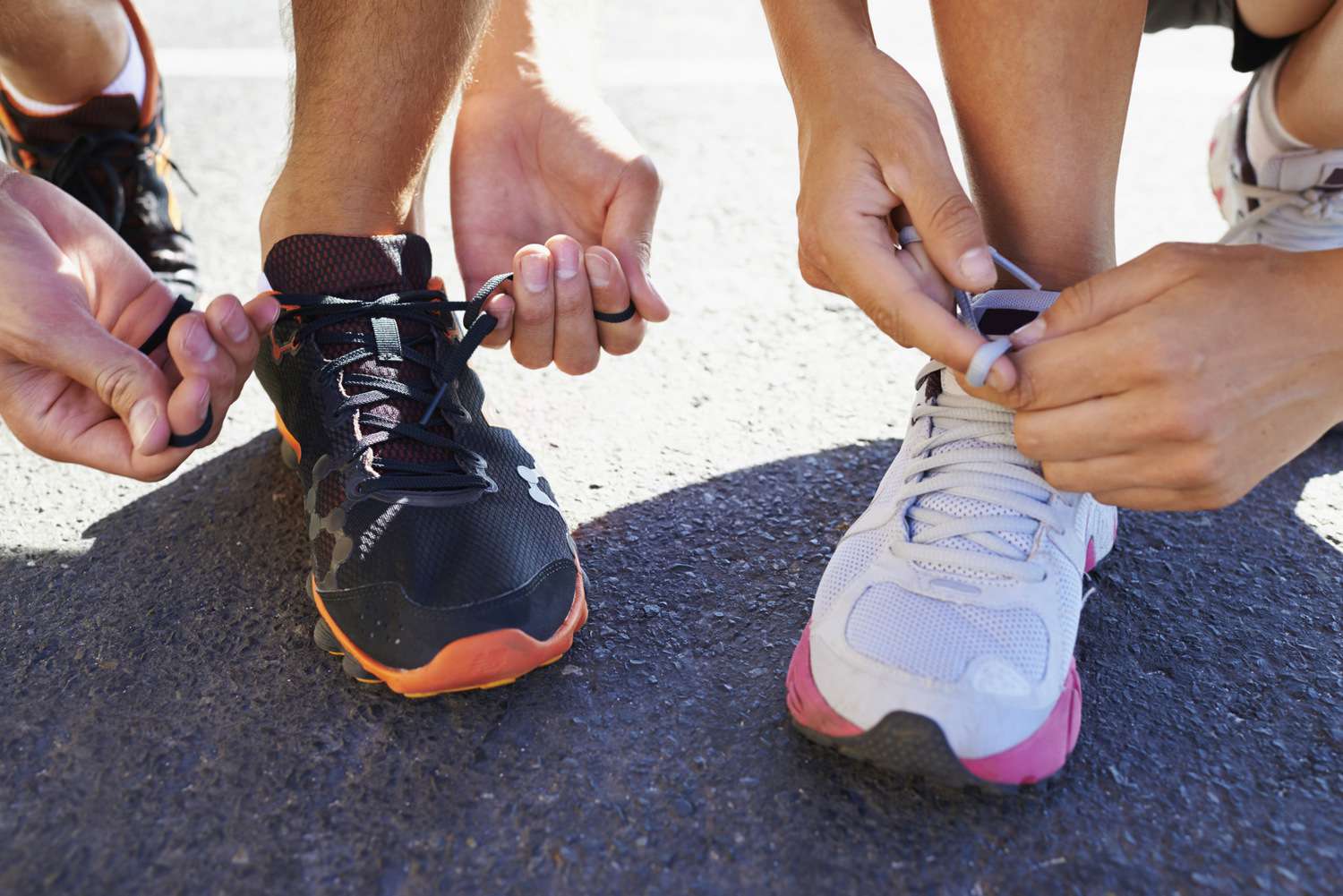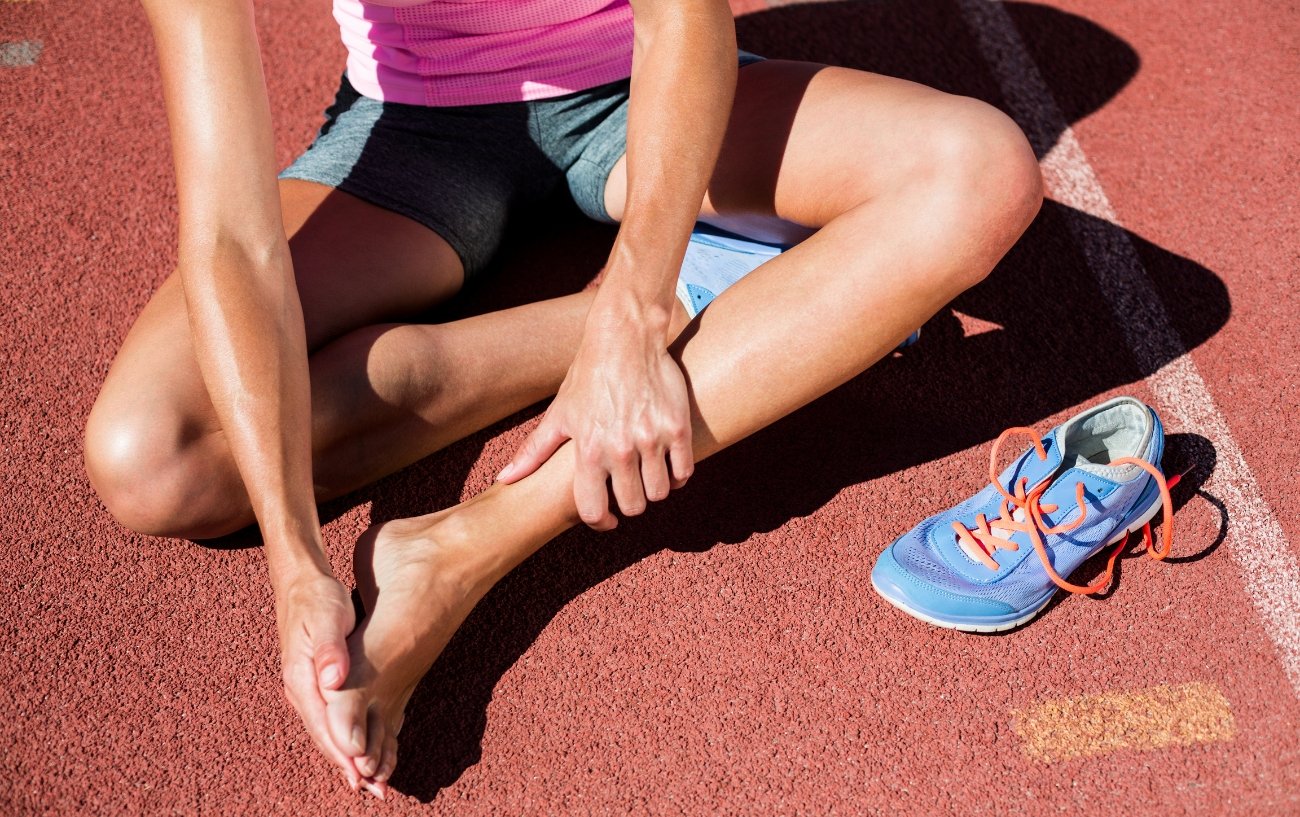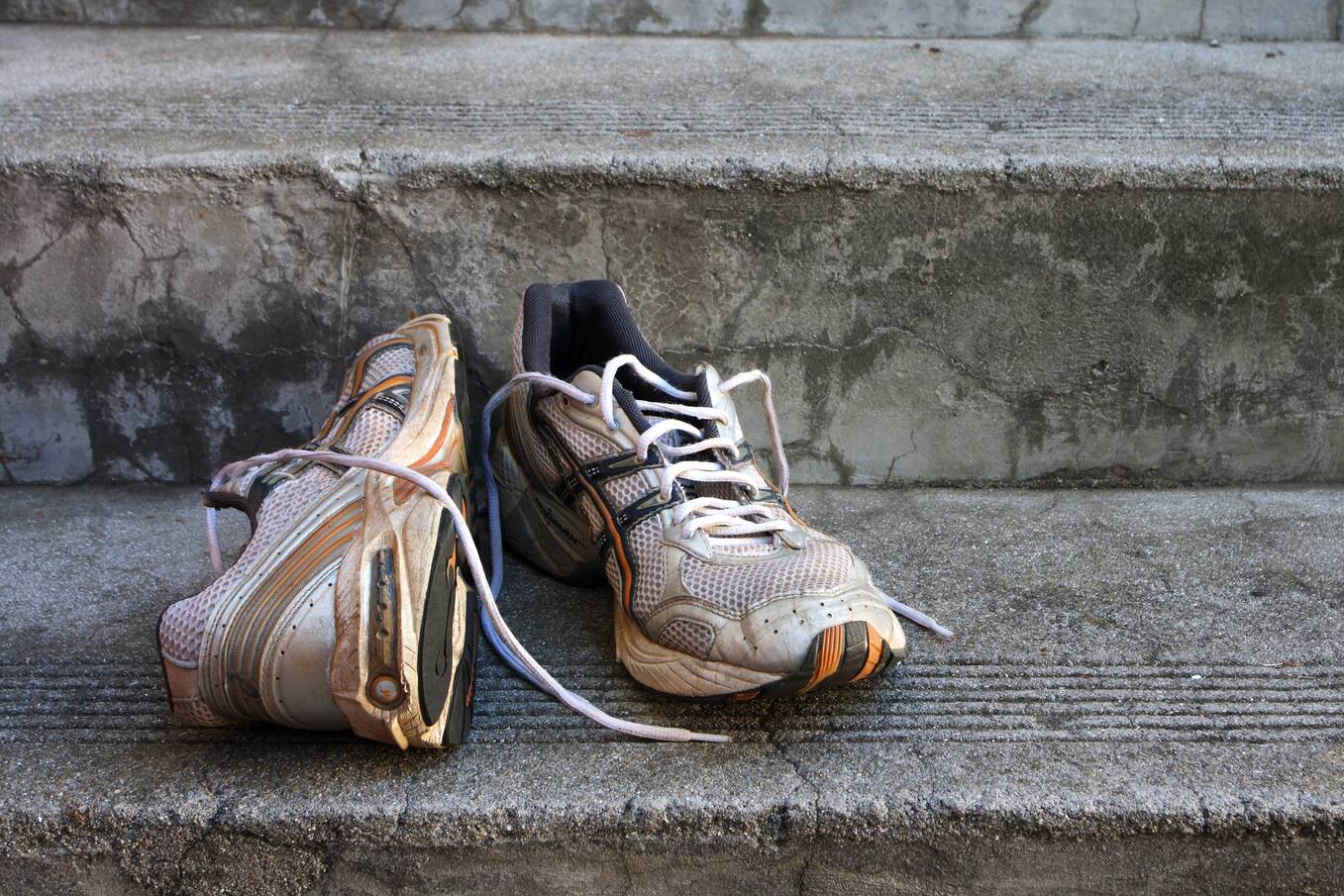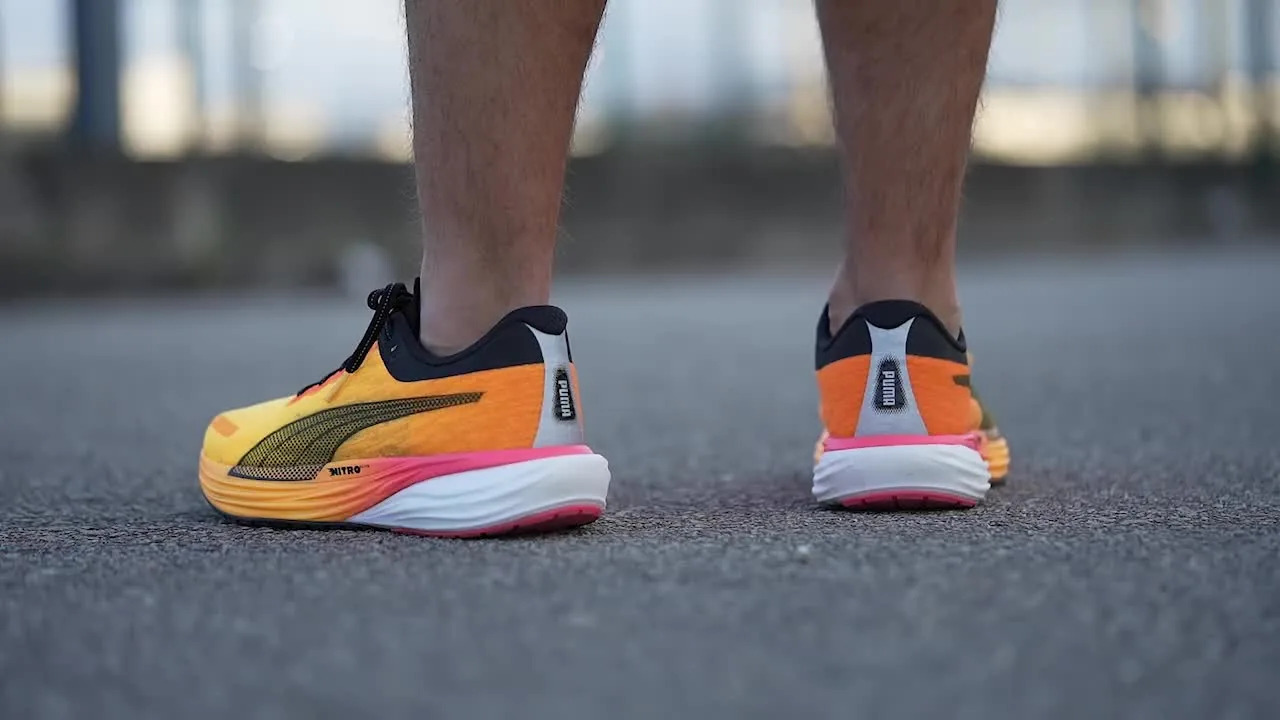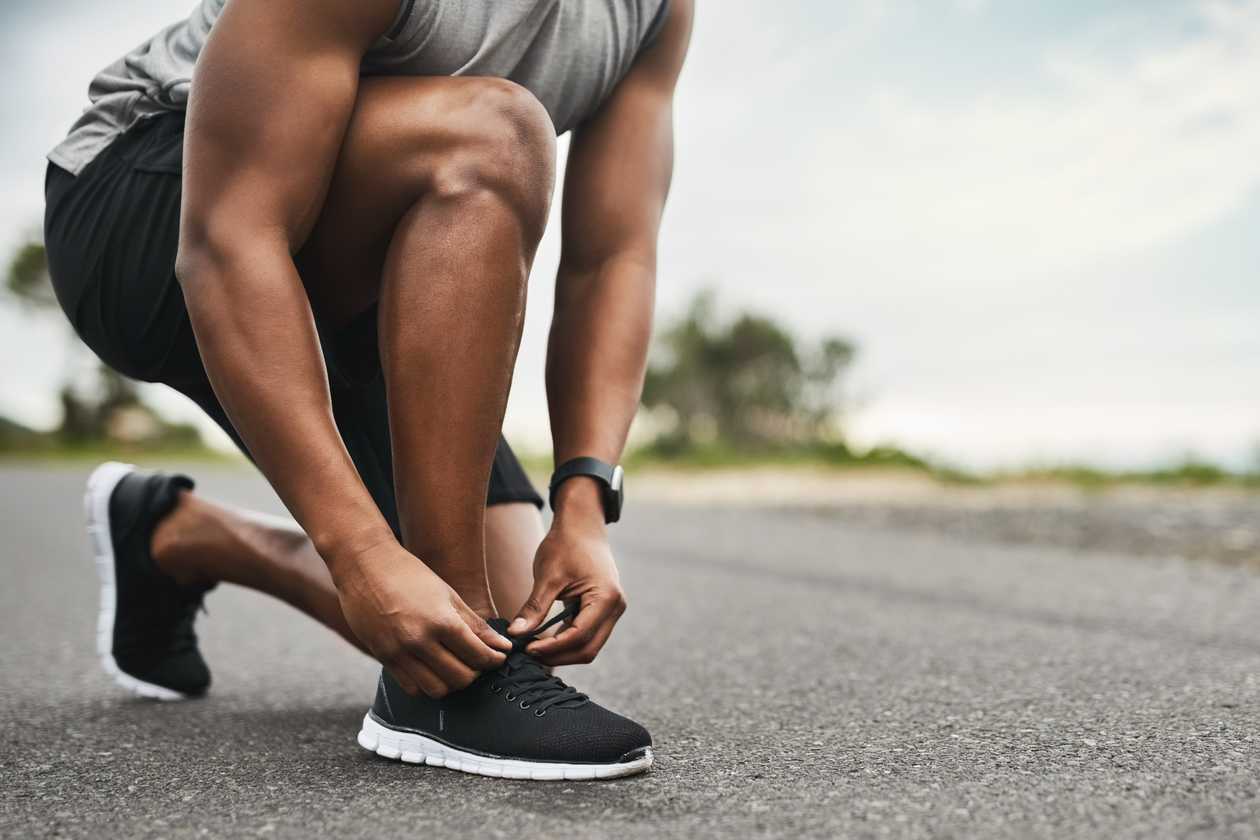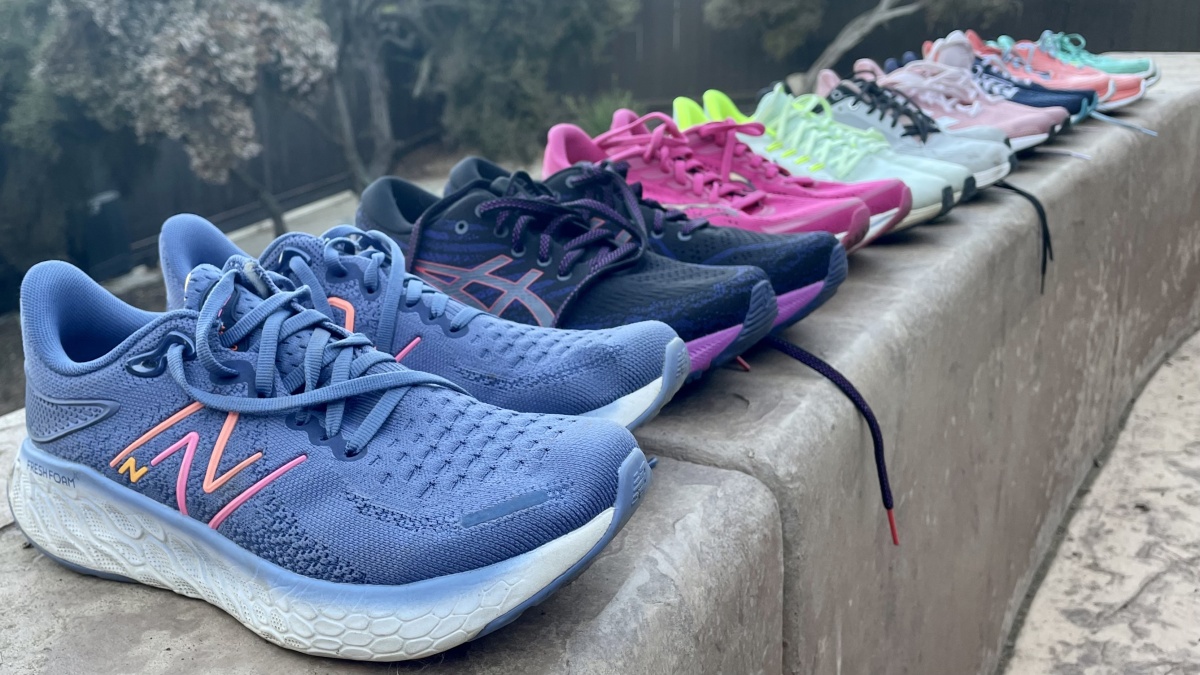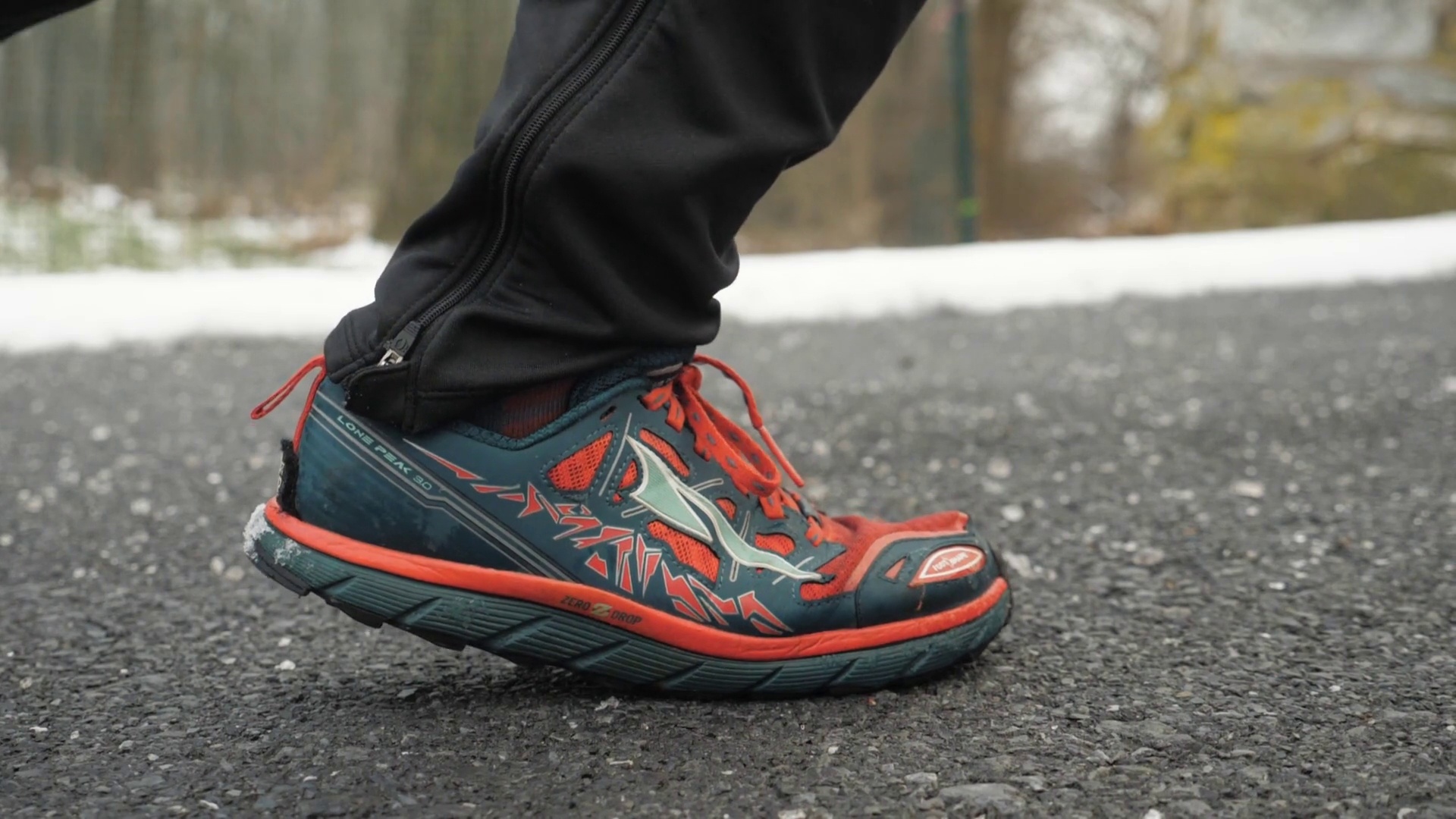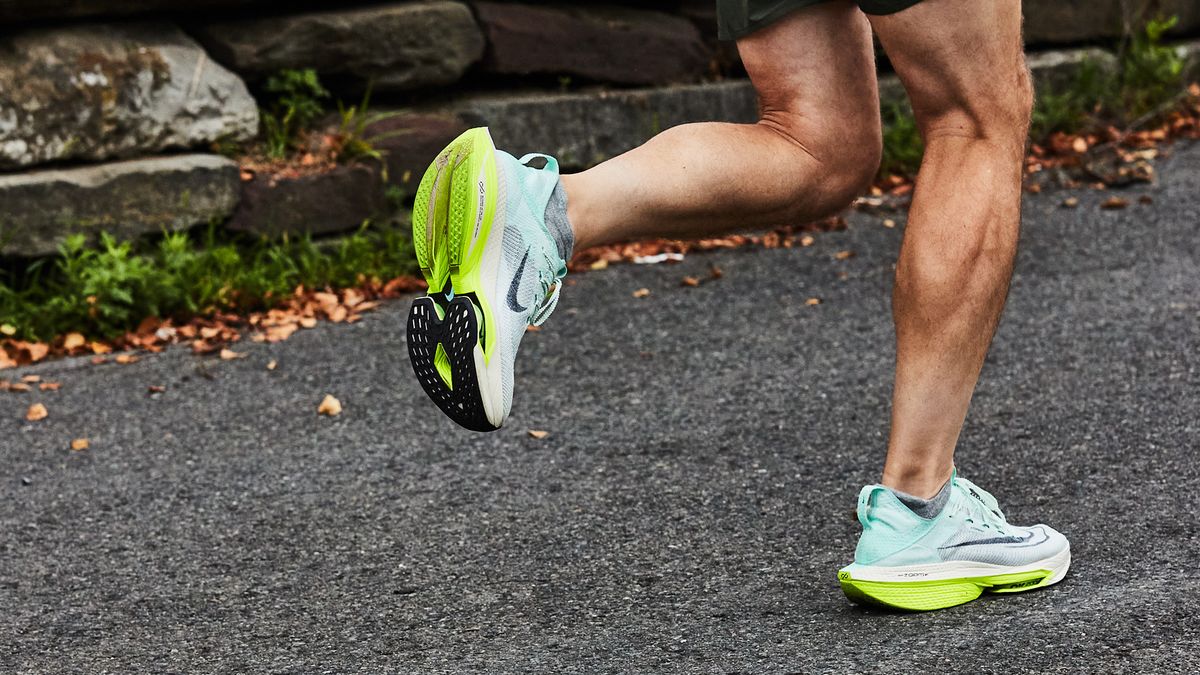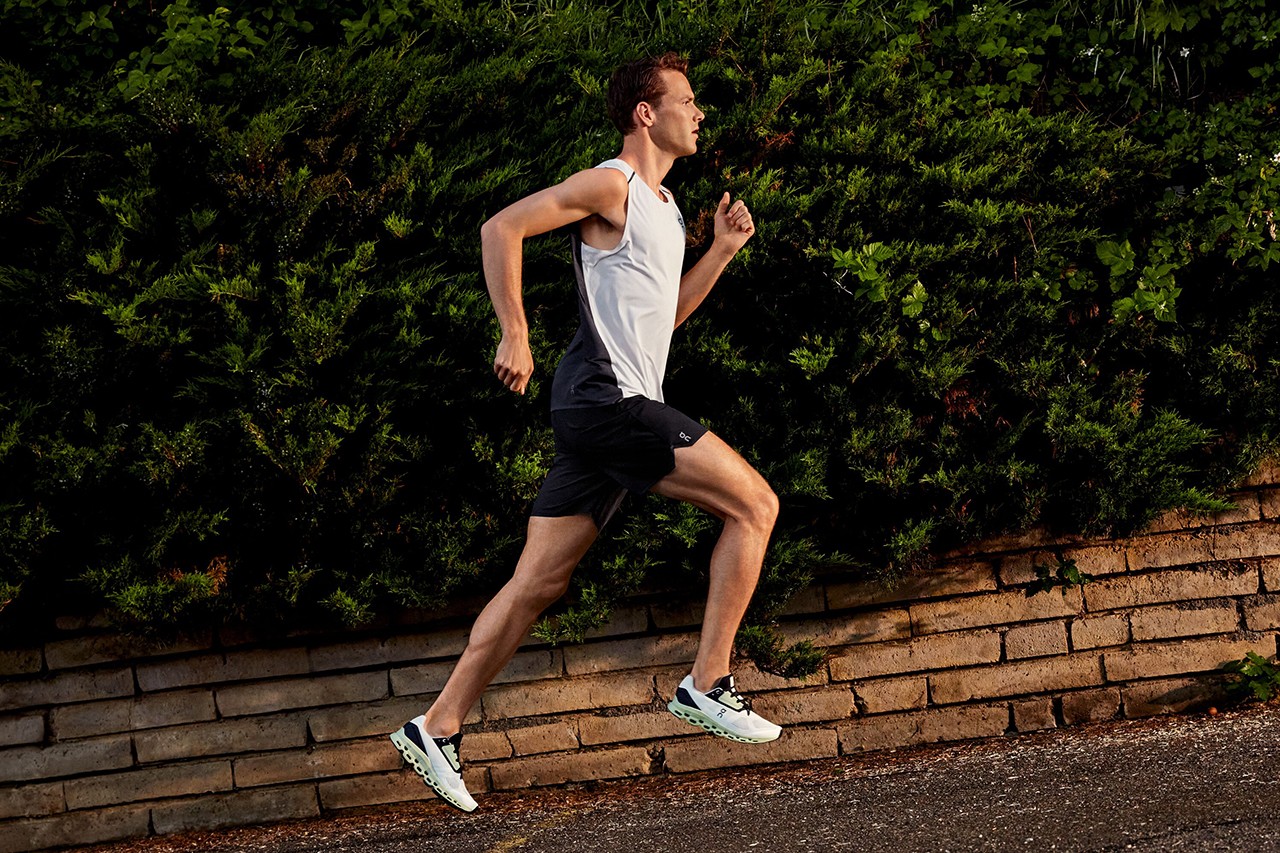

Featured
What Are Running Shoes For
Modified: January 2, 2024
Discover the importance and benefits of running shoes for your active lifestyle. Get insights on the top features, styles, and brands in our featured collection.
Introduction
Welcome to our comprehensive guide on running shoes! Whether you’re an avid runner or just starting out, finding the right pair of running shoes is crucial for a comfortable and injury-free experience. In this article, we will delve into the purpose of running shoes, key features to look for, the benefits they provide, factors to consider when choosing the right pair, different types available in the market, common mistakes to avoid, and frequently asked questions.
Running shoes are not just any ordinary pair of footwear; they are designed specifically to cater to the unique needs and biomechanics of runners. They offer a combination of support, cushioning, traction, and stability to help optimize performance and reduce the risk of injuries. Whether you’re hitting the pavement, trails, or treadmill, the right pair of running shoes can make all the difference.
Investing in a quality pair of running shoes is essential for both seasoned runners and beginners. The right shoes can provide comfort, protection, and support to your feet, ankles, and joints. They can also enhance your running efficiency, reduce fatigue, and improve your overall performance.
With the wide variety of running shoes available in the market, it’s easy to get overwhelmed by the choices. But fear not, as we will walk you through the key features to consider when selecting the perfect pair for your running needs. We will also address the most common mistakes that people make when buying running shoes, so you can make informed decisions and avoid potential pitfalls.
Whether you’re a marathon runner, trail enthusiast, or simply enjoy a casual jog in the park, this guide will provide valuable insights and tips to help you find the right pair of running shoes that meet your specific requirements. So, let’s get started and embark on this journey to discover the world of running shoes!
The Purpose of Running Shoes
Running shoes serve a fundamental purpose in providing support, stability, and cushioning to runners. The design and technology incorporated into these shoes are specifically tailored to meet the unique needs and demands of running.
One of the primary purposes of running shoes is to absorb impact and facilitate proper foot strike. Running involves repetitive movements that create a significant amount of force on the feet and joints. The cushioning in running shoes helps to distribute this impact and reduce the stress on the feet, ankles, knees, and hips, thereby minimizing the risk of injuries.
Another critical function of running shoes is to provide support to the foot’s arch. The arch acts as a natural shock absorber, and a properly supported arch helps maintain stability and balance while running. Running shoes with arch support prevent excessive pronation (inward rolling of the foot) or supination (outward rolling), promoting a more efficient and natural gait cycle.
Furthermore, running shoes offer traction to ensure grip and stability on various surfaces. Whether you’re running on roads, trails, or slippery surfaces, the outsole of running shoes is designed with materials and patterns that provide excellent traction to prevent slips and falls.
Running shoes also play a role in allowing for proper biomechanics. A well-designed shoe helps to align the feet, legs, and body, allowing for efficient and smooth movement. By promoting proper alignment, running shoes reduce the risk of overpronation, underpronation, and other biomechanical issues that can lead to discomfort or injuries.
Additionally, running shoes are constructed using lightweight and breathable materials. They are designed to provide comfort and allow for airflow to keep the feet cool and dry during long runs. This helps in preventing blisters, irritation, and other foot-related issues caused by excessive heat and moisture.
Overall, the purpose of running shoes is to provide the necessary support, cushioning, and protection to enhance running performance and reduce the risk of injuries. By wearing the right pair, runners can enjoy a more comfortable and enjoyable running experience.
Key Features of Running Shoes
When selecting a pair of running shoes, it’s important to consider several key features that can greatly impact your running experience. These features are designed to enhance comfort, support, and performance. Let’s explore some of the key features to look for in running shoes:
- Cushioning: Running shoes should provide adequate cushioning to absorb shock and protect your feet from the impact of each stride. The level of cushioning can vary based on personal preferences and the type of running you do. Some shoes offer plush cushioning for a soft and comfortable ride, while others provide a more responsive and firm cushioning for a more dynamic feel.
- Arch Support: The arch of the foot plays a crucial role in maintaining stability and efficient movement while running. Running shoes with proper arch support help to prevent overpronation or supination, promoting a neutral foot position and minimizing the risk of related injuries.
- Fit: The fit of the running shoes is essential for comfort and performance. Look for shoes that have a snug fit around the heel and midfoot to prevent slippage, while also offering enough room in the toe box to allow for natural toe splay. Trying on shoes and getting the right size is crucial to ensure a proper fit.
- Breathability: Running shoes with breathable materials, such as mesh uppers, allow for proper airflow, keeping your feet cool and dry during those longer runs. This helps to prevent discomfort, blisters, and odors caused by excessive sweat and moisture.
- Durability: Running shoes undergo a lot of wear and tear, so it’s crucial to look for shoes made with durable materials and construction. Reinforcements in high wear areas, such as the toe box and outsole, can significantly increase the lifespan of the shoes.
- Flexibility: Flexibility is essential to allow for natural foot movement while running. Look for shoes with a flexible midsole that bends and moves with your foot. This promotes a more efficient and comfortable stride.
- Traction: Running shoes should have a good grip to provide traction on various surfaces. The outsole should have a patterned design with durable rubber compounds that offer reliable traction on both wet and dry conditions.
- Weight: The weight of the running shoes can impact your overall performance. Lighter shoes can help improve speed and agility, while still providing the necessary cushioning and support.
By considering these key features, you can find a pair of running shoes that meet your specific needs and preferences. Remember to prioritize comfort and functionality to ensure an enjoyable running experience.
Benefits of Wearing Running Shoes
Wearing proper running shoes offers a multitude of benefits that can enhance your running experience and overall well-being. Here are some key benefits of wearing running shoes:
- Reduced Risk of Injuries: Running shoes are specifically designed to provide cushioning and support to minimize the impact on your feet and joints. By absorbing shock and reducing the stress on your body, running shoes help prevent common running injuries such as shin splints, knee pain, and stress fractures.
- Improved Comfort: Running shoes are constructed with advanced cushioning technology and materials, ensuring a comfortable experience during your runs. The cushioning helps to provide a soft and supportive landing, reducing discomfort and fatigue, and allowing you to run longer distances with ease.
- Enhanced Performance: The right pair of running shoes can boost your performance by improving your running efficiency and stride. With the right amount of cushioning, support, and traction, you can achieve better energy transfer, reduced muscle fatigue, and improved overall running economy.
- Arch Support and Alignment: Many running shoes offer arch support to promote proper foot alignment. This helps prevent overpronation or supination, keeping your feet in a neutral position during your runs. By maintaining proper alignment, you can optimize your running form, reduce the risk of injuries, and enhance your overall running experience.
- Protection and Stability: Running shoes are designed with features that provide stability and protect your feet. The outsole provides reliable traction to prevent slips and falls, while additional support features like heel counters and midfoot overlays help stabilize your feet and ankles, reducing the risk of sprains and twists.
- Improved Foot Health: Wearing properly fitting running shoes that support your foot’s natural shape and biomechanics can improve your foot health over time. They help in preventing common foot problems such as blisters, calluses, and plantar fasciitis, allowing you to focus on your running goals without discomfort or distractions.
- Customizable Options: Running shoes come in a variety of styles, designs, and features that cater to different types of runners. Whether you have flat feet, high arches, or any other specific foot condition, there are running shoes available that can address your individual needs. This allows for a more personalized and comfortable running experience.
By investing in a quality pair of running shoes, you can enjoy these numerous benefits and make your running sessions more enjoyable, comfortable, and injury-free.
Factors to Consider When Choosing Running Shoes
Choosing the right pair of running shoes is crucial to ensure comfort, support, and optimal performance. With the wide variety of options available, it can be overwhelming to make the right choice. Here are some key factors to consider when selecting running shoes:
- Foot Type: Understanding your foot type is essential in finding the right pair of running shoes. Consider whether you have a normal arch, high arch, or flat feet. This information will help you determine the level of arch support and cushioning that you need in your shoes.
- Pronation: Pronation refers to the natural inward rolling of the foot during running. It’s crucial to know whether you overpronate, underpronate, or have a neutral gait. This will guide you in selecting shoes with the appropriate stability features to support your foot movement and prevent any potential issues.
- Cushioning: Consider the level of cushioning you prefer. Some runners prefer plush cushioning for a softer feel, while others might opt for firmer cushioning for a more responsive ride. The type and amount of cushioning will impact the comfort and shock absorption provided by the shoes.
- Fit: The fit of the running shoes is vital for comfort and preventing any potential problems. Ensure that there is enough room in the toe box to allow for natural toe splay, while the heel and midfoot should have a snug fit to prevent slippage. Different brands and models might have varying fits, so it’s important to try on several options before making a decision.
- Weight: Consider the weight of the running shoes. Lighter shoes can promote faster running and agility, while heavier shoes might offer more stability and durability. Choose a weight that aligns with your running style and preferences.
- Traction: Assess the type of terrain you’ll be running on. If you primarily run on trails or uneven surfaces, look for shoes with an outsole that provides excellent traction and grip. For road runners, a smoother outsole can be suitable.
- Support: Depending on your foot structure and needs, you may require additional support features in your running shoes. This can include features like medial posts, stability shanks, or external heel counters to provide stability and prevent excessive foot movements.
- Durability: Consider the durability of the running shoes, especially if you plan to use them frequently or for long distances. Look for shoes with durable materials, reinforced areas, and reliable construction that can withstand the wear and tear of regular use.
By taking these factors into account when choosing running shoes, you can find a pair that caters to your specific needs and ensures a comfortable and enjoyable running experience.
Different Types of Running Shoes
When it comes to running shoes, there are various types available, each designed to cater to different running styles, terrains, and personal preferences. Understanding the different types of running shoes can help you choose the most suitable pair for your needs. Here are some common types of running shoes:
- Neutral/Cushioned Shoes: These shoes provide a balance of cushioning and flexibility, making them suitable for runners with a neutral gait or those who underpronate (supinate). They offer ample cushioning to absorb impact and promote a smooth ride.
- Stability Shoes: Stability shoes are designed for runners who have mild to moderate overpronation. These shoes feature a combination of cushioning and supportive features such as medial posts or dual-density foam to provide stability and control excessive foot inward rolling.
- Minimalist/Barefoot Shoes: These shoes aim to mimic the natural form and movement of running barefoot. They have a minimal and lightweight design, promoting a forefoot or midfoot strike rather than a heel strike. Minimalist shoes provide a closer-to-the-ground feel and encourage a more natural running gait.
- Trail Running Shoes: Designed for off-road running, trail running shoes have a more aggressive outsole with deeper lugs for enhanced traction on uneven surfaces. They also offer additional protection and durability features to withstand challenging terrains, including rocks, roots, and mud.
- Road Running Shoes: These shoes are specifically designed for running on paved surfaces such as roads and sidewalks. They tend to have a smoother outsole for improved traction on pavement and offer cushioning and responsiveness for a comfortable road-running experience.
- Racing Shoes: Racing shoes are lightweight and built for speed. They prioritize minimal cushioning and a snug fit to maximize energy efficiency and reduce weight. These shoes are ideal for short-distance races or runners looking to improve their speed during training.
- Motion Control Shoes: Motion control shoes are designed for runners who have severe overpronation and require maximum support and stability. They have firm support features and a structured design to minimize excessive foot movements.
- Hybrid Shoes: Hybrid shoes combine features from different types, offering a versatile option for runners who may require a mix of cushioning, stability, and off-road capabilities. These shoes are suitable for those who partake in various running activities or prefer a multi-purpose option.
It’s important to consider your running style, foot structure, terrain, and personal preferences when choosing the type of running shoes that best align with your needs. Consulting with a knowledgeable running specialist or shoe retailer can also provide valuable guidance in finding the right pair.
Common Mistakes to Avoid When Buying Running Shoes
When it comes to buying running shoes, it’s important to avoid certain common mistakes that can lead to discomfort, injuries, or an unsatisfactory running experience. Here are some common mistakes to avoid:
- Ignoring Proper Fit: One of the biggest mistakes is overlooking the importance of a proper fit. Avoid buying shoes that are too tight or too loose, as this can lead to blisters, discomfort, and instability while running. Take the time to try on several pairs and get fitted properly.
- Choosing Style over Functionality: While aesthetics are important, prioritizing style over functionality can be a mistake. Selecting running shoes solely based on their appearance may not provide the necessary features and support required for your specific running needs.
- Not Considering Pronation: Understanding your foot’s pronation (neutral, overpronation, or supination) is crucial in selecting the right type of running shoes. Not considering pronation can lead to inadequate support, improper alignment, and potential injuries.
- Not Replacing Worn-out Shoes: Running shoes have a limited lifespan. Continually using worn-out shoes can lead to decreased cushioning and support, which can increase the risk of injuries. Replace your running shoes regularly to maintain optimal performance and protection.
- Ignoring Terrain and Running Style: Consider the type of terrain you typically run on and your specific running style. Neglecting these factors can result in choosing the wrong type of running shoes that may not provide the necessary traction, stability, or cushioning required for your running environment.
- Skipping Professional Advice: Seek advice from knowledgeable running specialists or shoe retailers. They can assess your gait, provide recommendations based on your specific needs, and guide you towards finding the right pair of running shoes.
- Not Trying Shoes Before Buying: Avoid buying running shoes without trying them on first. Every brand and model can have different fits and feel. Trying them on allows you to assess comfort, fit, and overall satisfaction before finalizing your purchase.
- Buying Based on Price Alone: While budget is a consideration, solely focusing on the price can lead to overlooking important factors such as fit, support, and durability. Invest in a quality pair of running shoes that can provide the necessary comfort and protection.
Avoiding these common mistakes will help ensure that you make an informed decision when purchasing running shoes. It will also contribute to a more comfortable and enjoyable running experience, reducing the risk of injuries and allowing you to make the most of your runs.
Frequently Asked Questions (FAQs)
1. How often should I replace my running shoes?
Ideally, running shoes should be replaced every 300-500 miles or when you start noticing signs of wear and tear. As the cushioning and support properties of the shoe deteriorate over time, using worn-out shoes can increase the risk of injuries.
2. How do I know if I have the right fit?
Your running shoes should provide a snug fit around the heel and midfoot, while still allowing enough room in the toe box for natural toe movement. Make sure there is no excess pressure or discomfort. It’s advisable to try on running shoes and walk or jog in them before making a decision.
3. Do I need specific running shoes if I have flat feet or high arches?
Having flat feet or high arches can impact your pronation and running gait. It is recommended to seek shoes with features that provide appropriate support and stability based on your foot type. Consult with a specialist or shoe retailer who can guide you in choosing the right shoes for your specific needs.
4. Can I wear running shoes for other sports or activities?
While running shoes are specifically designed for running, they can work well for other low-impact activities such as walking or light gym workouts. However, different sports often require specific shoes with features tailored to the demands of the activity. If you participate in other sports, it’s best to consider sport-specific shoes.
5. Can I wash my running shoes?
It is generally not recommended to machine wash or dry running shoes, as this can damage their structure and cushioning. Instead, remove the insoles and hand wash the shoe upper using mild soap and cold water. Allow them to air dry naturally. Always refer to the manufacturer’s care instructions for specific guidance.
6. Are expensive running shoes always better?
The price of running shoes does not always indicate their quality or suitability for your needs. While expensive shoes may offer additional features or technologies, it’s important to focus on finding shoes that provide adequate support, comfort, and fit regardless of their price.
7. Can I use running shoes for long-distance running?
Yes, running shoes are designed for various distances, including long-distance running. Consider factors such as cushioning, support, and fit to ensure that your shoes offer the necessary comfort and protection for prolonged running sessions.
8. Are there specific shoes for sprinting or track running?
For sprinting or track running, lightweight and responsive shoes are commonly used, such as racing flats or sprint spikes. These shoes prioritize speed and maximum efficiency but may have minimal cushioning. They are typically only suitable for short-distance, high-intensity running.
Remember, if you have specific concerns or questions about running shoes, it’s always best to consult with a running specialist or podiatrist who can provide personalized advice based on your individual needs.
Conclusion
Choosing the right pair of running shoes is essential for a comfortable and injury-free running experience. By understanding the purpose of running shoes, key features to consider, and the different types available, you can make an informed decision that aligns with your running style and needs.
Running shoes provide vital support, cushioning, stability, and protection to minimize the risk of injuries and enhance your performance. Consider factors such as fit, pronation, terrain, and personal preferences when selecting your shoes. Avoid common mistakes such as ignoring fit, overlooking pronation, or choosing style over functionality.
Remember to try on multiple pairs, seek professional advice if needed, and replace worn-out shoes to maintain optimal performance. Additionally, understanding your foot type, running gait, and specific requirements can guide you in finding the most suitable pair of running shoes.
Whether you’re a dedicated marathon runner, a casual jogger, or just starting your running journey, investing in a quality pair of running shoes can make a world of difference. Prioritize comfort, support, and functionality, and enjoy the benefits of a smooth and enjoyable running experience.
